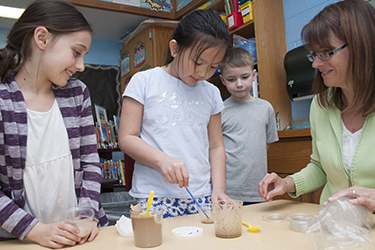 The strategic plan that the Board of Education adopted last spring resulted in a variety of activity throughout the 2016-17 school year that will shape the future of a Niskayuna education.
The strategic plan that the Board of Education adopted last spring resulted in a variety of activity throughout the 2016-17 school year that will shape the future of a Niskayuna education.
One of these strategic initiatives is the Instructional Program Advisory Council, or IPAC, which is charged with developing a broad vision for the future of school programs. A key theme in IPAC’s work over the last year has been ensuring that students are exposed to a wide range of skills, experiences and practical connections to their learning.
IPAC includes parents and community members who represent business, industry, higher education and the nonprofit and government sectors, along with faculty, administrators, and Superintendent Cosimo Tangorra, Jr.
Members see more interdisciplinary and project-based work in the earlier grades as a priority. The committee is studying the features of a K-8 program that are best suited to this. It has also called for greater awareness of the high school options for students such as internships and career and technical education programs. For more about these options, including a video, click here.
IPAC will also play a leading role as the district looks to plan the future of school facilities. Members recently met with a consultant who will conduct an enrollment and facilities capacity study over the course of the coming months.
The study will inform future capital improvements – ensuring that the district has adequate space for the student population and to house programs as they change. Once it’s complete, IPAC will help engage the community with the findings and shape the recommendations that will ultimately be considered by the Board of Education.
Reviewing and Advancing Our Programs
Separately, a District Curriculum and Advisory Council led by Assistant Superintendent for Instruction Lauren Gemmill has initiated a Program Review process to inform regular updates in each academic area.
The Science and Engineering Technology Department began its review this year, and the World Language Department and Department of Art & Design will begin their reviews in the fall of 2017.
The Science & Engineering Technology team recently delivered initial recommendations based on its work. These include developing a consistent Science and Engineering Technology curriculum aligned across grade levels, establishing an ad hoc committee to explore the potential for accelerated science and engineering technology options in middle school, and beginning a conversation about the facilities improvements and scheduling changes needed to facilitate more hands-on learning in grades K-8.
The district has also been engaged in a multi-year project to develop the next generation of Niskayuna curriculum and a variety of efforts that promote teacher leadership, invest in professional development, enhance school culture, and strengthen student support. These initiatives have involved educators from all areas of the district.
“We are in an active period of identifying what a Niskayuna education will be today and into the future,” Dr. Tangorra said. “This is a community conversation and we invite all stakeholders to join us. We know that the world is changing rapidly, and are working to make sure that Niskayuna is at the forefront of adapting to this change and meeting the needs of our students.”

You must be logged in to post a comment.